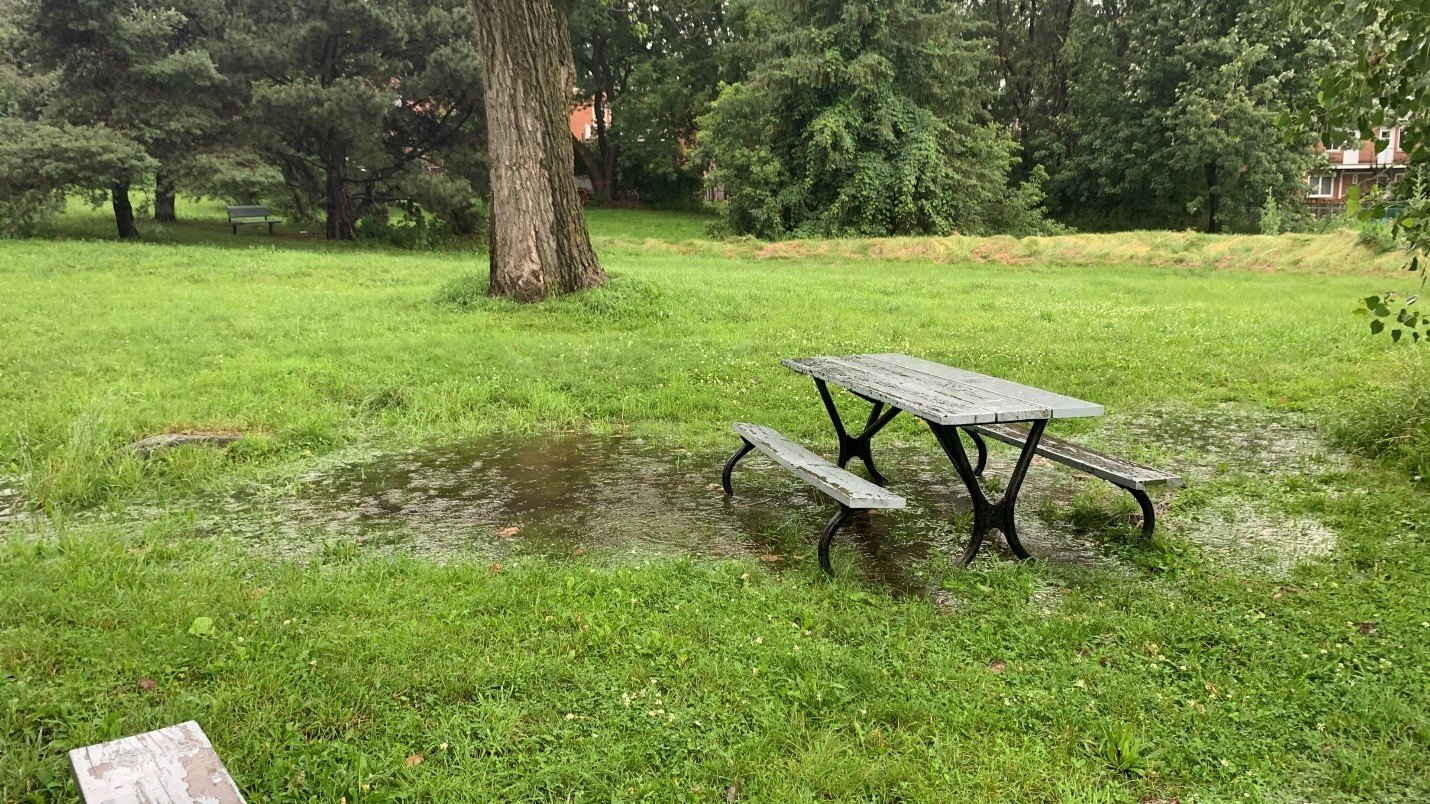Rainwater management using sponge parks: case study of Prieur Park

Mitacs Grant Supplement - 2025
Description
With the increase in the frequency and intensity of extreme precipitation events linked to climate change, urban drainage infrastructure networks are under increasing strain. Not only is this infrastructure aging, but the design assumptions made at the time make it particularly vulnerable. To remedy this, innovative solutions are emerging, such as sponge parks, which retain and infiltrate stormwater directly at the source. Despite their potential, these developments remain understudied, particularly with regard to best design practices and methods for transforming an existing park into a sponge park with minimal intervention.
This research project aims to deepen knowledge about this type of infrastructure by using PCSWMM 2D software to create a hydrological and hydraulic model of Prieur Park, located in the Ahuntsic-Cartierville borough of Montreal. This park, which will be transformed into a sponge park in the summer of 2023 with minimal intervention, will serve as a case study to evaluate its effectiveness in retaining stormwater during extreme events. The results will determine whether the new configuration is optimal or whether additional adjustments would be beneficial. The analysis will be used to develop a technical guide to inform the design of future sponge parks built with minimal intervention.
Objectives
- Contribute to expanding our knowledge of sponge parks.
- Recommend additional adjustments to optimize the Prieur park.
- Develop a technical guide for the construction of future sponge parks.
Related projects
Impacts of densification on municipal water infrastructure
Study of the long-term hydrogeological behavior of green infrastructure, considering the impact of climate change
Don’t just coexist with climate change.
